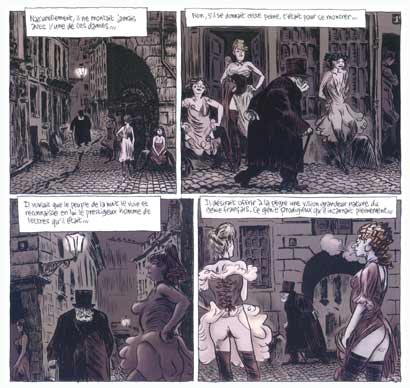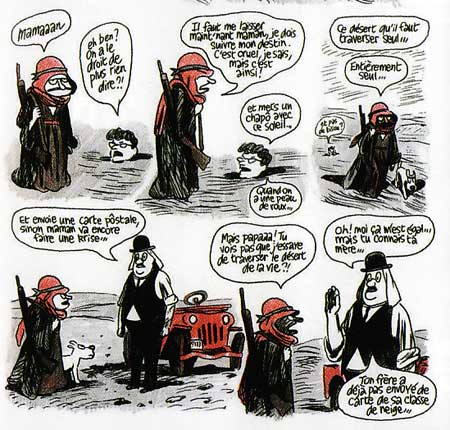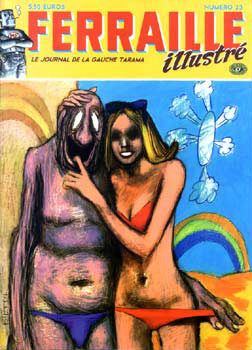'Vitesse Moderne'.
Christian Hincker, who uses the pseudonym Blutch, studied art in Strasbourg, where he was born. Among his graphic influences are Claire Bretécher, Jules Feiffer, Marcel Gotlib and Tibet.
Blutch made his comic debut in the magazine Fluide Glacial in 1988 with 'Pecos Jim' and several short stories. He later came up with the series 'Johnny Staccato' and 'Mademoiselle Sunnymoon'. His Fluide Glacial work has been collected in such albums as 'Waldo's Bar', 'Mademoiselle Sunnymoon', 'Rancho Bravo', 'Blotch, le Roi de Paris' and 'Blotch Face à Son Destin'. At the same time, he joined the publishing house L'Association, where he began a collaboration with the magazine Lapin. His Lapin work appeared in the album 'Sunnymoon, Tu Es Malade'. At the publishing house Cornélius, he created 'La Lettre Américaine' and 'Mitchum'.
'Petit Christian' (1998).
Blutch joined the magazine À Suivre in 1996. There, he started his series 'Peplum', a homosexual tragedy. The complete story appeared in an album at Cornélius. He also works as an illustrator for Libération, The New-Yorker and Les Inrockuptibles, and he has cooperated on several collective albums. In 1998, he published 'Le Petit Christian', and in 2008 a second installment was published in Charlie Hebdo. Blutch has also collaborated with Dupuy and Berbérian on the story 'Endlich Glücklich Leben'.
'Endlich Glücklich Leben'.
A master in the black-and-white genre, Blutch created his first color album, 'Vitesse Moderne', in the Aire Libre collection of Dupuis in 2002. Around 2005 he changed his graphic style for his illustration work, and started signing with Blutch Hincker. Together with Charles Burns, Marie Caillou, Lorenzo Mattotti, Richard McGuire and Pierre di Sciullo, he also produced the animation film 'Peur(s) du Noir' in 2008. Blutch won the Grand Prix de la Ville d'Angoulême in 2009, and was president of the 2010 Angoulême comic festival. In 2019, he paid tribute to Albert Uderzo in 'Générations Astérix' (2019).
Blutch was an influence on Hervé Boivin, Sylvain Escallon, Garf, Jean-Louis Lejeune, Roman Muradov and Leopold Prudon.
Cover illustration for Ferraille Illustré.





